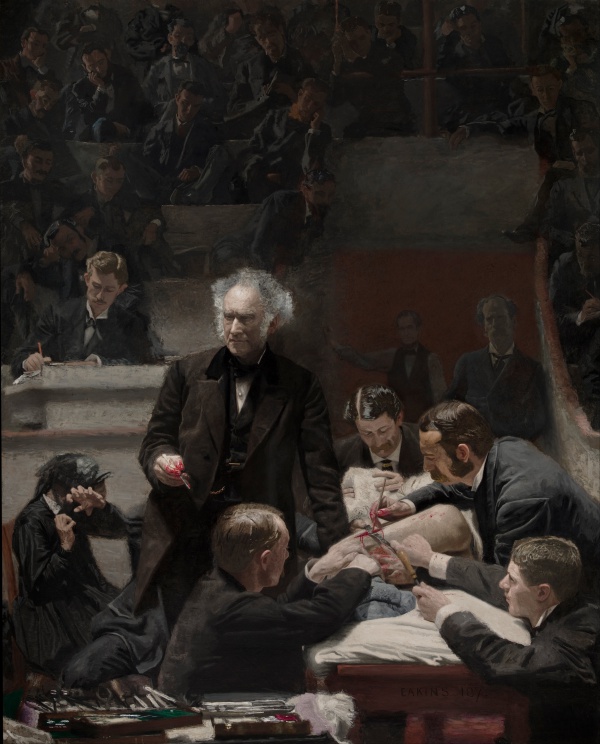Facts About The Gross Clinic
"The Gross Clinic" also known as "The Clinic of Dr. Gross" is a celebrated painting created in 1875 by the American artist Thomas Eakins. This remarkable oil on canvas measures 8 feet by 6.5 feet and vividly depicts Dr. Samuel D. Gross delivering a lecture to medical students. Eakins himself is included in the scene, lending it an element of self-portraiture.
The painting illustrates Dr. Gross performing surgery on a young man with osteomyelitis of the femur. At the time, amputations were common for such conditions, but Gross chose a more conservative approach. This work provides a fascinating glimpse into 19th-century surgical practices, highlighting the shift toward cleaner, more hygienic operations.
Upon its initial exhibition, "The Gross Clinic" sparked controversy. Its realistic depiction of surgery and the presence of a visibly distressed woman in the scene shocked some viewers. Over the years, critics have offered mixed reactions—some have praised its artistic brilliance, while others have critiqued its composition. The painting has been analyzed through various lenses, including themes of castration anxiety, control over the body, and the intersection of art and medicine.
The painting has had a notable history of ownership, including a significant sale to the National Gallery of Art in Washington, D.C., and the Crystal Bridges Museum of American Art. Over the years, it has undergone multiple restorations to repair damages and correct color inconsistencies. Despite the challenges and debates surrounding its ownership, "The Gross Clinic" remains a monumental piece in American art history. Michael Kimmelman of The New York Times even hailed it as the finest painting of the 19th century in America.

 Mexico
Mexico